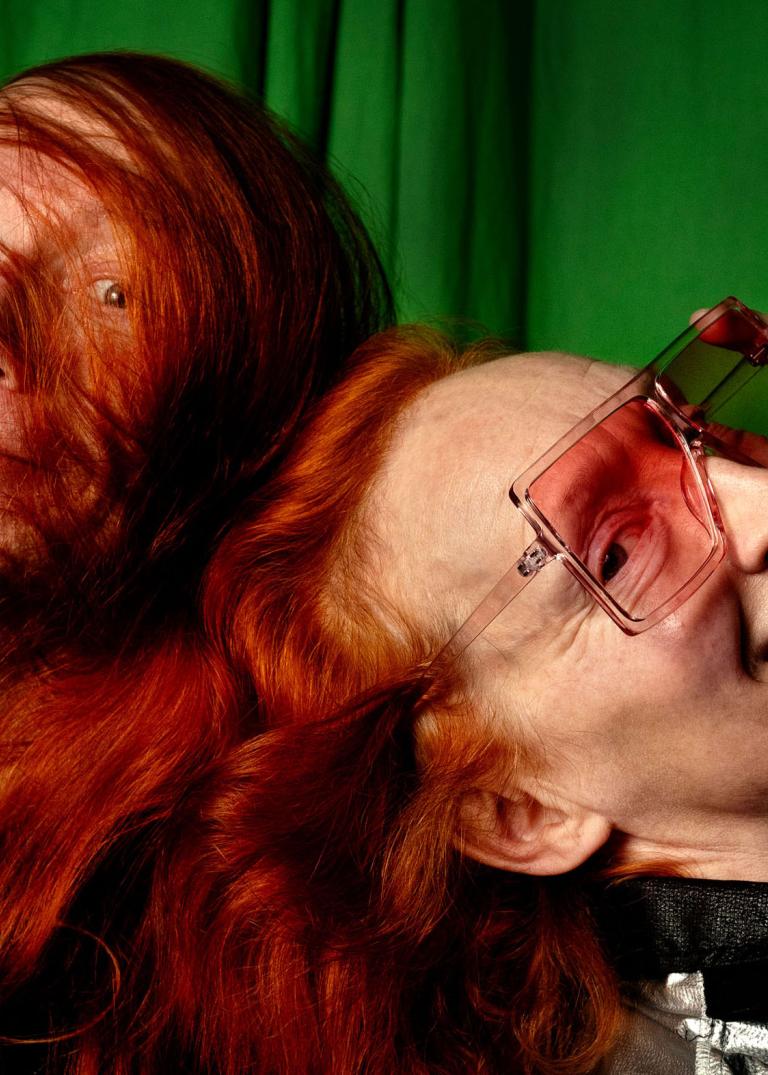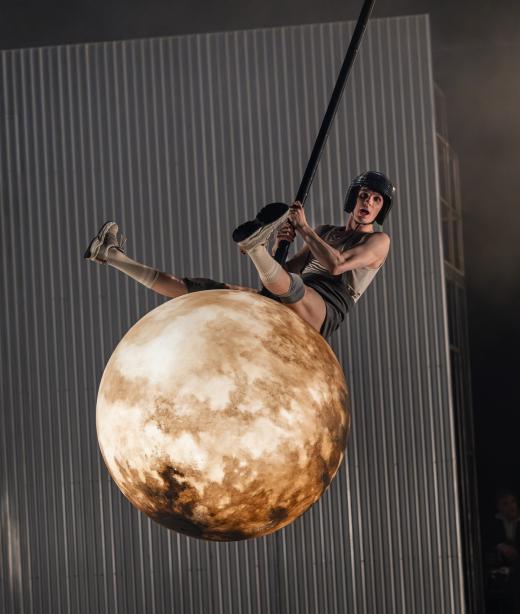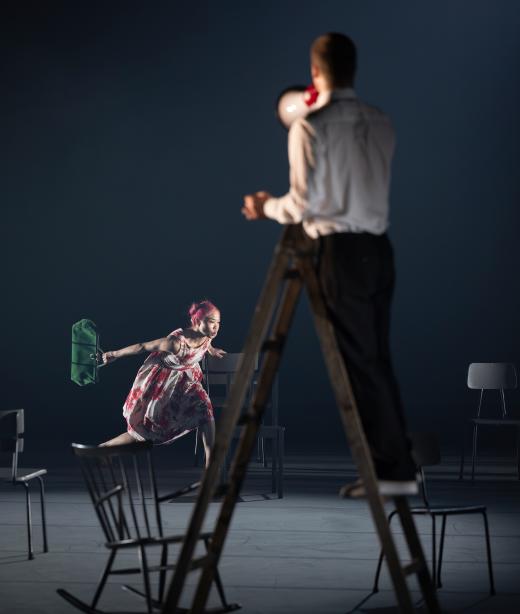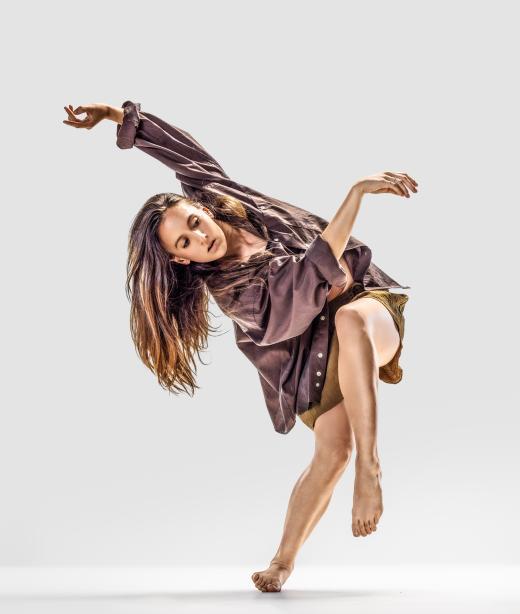
En fanfare for dance
'Wing Ding' is part of Skånes Dansteater's 30th anniversary celebration. The venue, Malmö Opera, is very apt, since this is where the company started in 1995. The creators of the production are the dance veteran Lidia Wos and the experiences performing arts composer Anders Ortman.
We meet in Anders’ home by Fridhemstorget in Malmö. He has submitted the musical score for the production at Malmö Opera a few days earlier, and I ask if I can see an extract. But when he opens the first page on his computer, Lidia protests laughingly.
LW: No, no, no, don’t show the opening! We mustn’t spoil the surprise!
He scrolls down to a trumpet solo instead, and then to a place with the full orchestra and choir. The 32 choir members will be on stage and act in different ways alongside the 14 dancers. These co-productions with the Opera are a long-standing tradition. Last time, they performed 'Mozart’s Requiem' by Örjan Andersson, and before that Anouk van Dijk’s 'Out of the Blue'.
LW: As a dancer at Skånes Dansteater, I always looked forward to the productions at the Opera. I loved the atmosphere, the big stage, the people, the corridors. When I joined the company in 2002, it was still based at the Opera, so the projects there felt like coming home.
How is 'Wing Ding' structured?
LW: When I create a new work, I always start by visualizing images and situations. Together, they form a universe that I want to invite the audience into. This particular universe consists of thirteen tableaus with different moods and visual styles. I don’t work with clear storylines from A to Z or specific themes, but different layers that the audience can interpret freely.
How did you come up with the lyrics for the choir?
LW: My first question when they asked me to create an anniversary show was, “What is the history of Skånes Dansteater?” The answer is: its productions. So I made a list of all the titles from the company’s thirty years. That is the actual source and inspiration for 'Wing Ding'. It’s not about the actual productions but the words in their titles. They were an inspiration to me, for both stage sets, costumes, lighting and the music.
AO: And that was what I focused on too, when I composed the music, especially the text sung by the choir. It’s not a narrative text, in other words. But a slightly absurd poetry can arise when you combine certain titles into longer sentences. Apart from these texts, the choir will also be making some unusual noises, like clicking, tssss, pscht, gulp, and so on.
What does the production sound like, on the whole?
AO: We wanted it to be as dynamic as possible – ranging from instrumental solos to tutti fortissimo. And then there are some recurring melodies, forms and colors that hold it all together. Small, absurd situations that run through the performance and aren’t concluded until the finale. There are also some improvised scenes that we will develop in rehearsal.
How did your collaboration start?
LW: In 2015, when I was a dancer in 'Hjältar, gudar och monster' (Heroes, Gods and Monsters) at Malmö Stadsteater. Anders had composed the score, and I remember that special energy of standing by the piano when he was teaching us how to sing. He spurred me to do my very best. Something in that encounter gave me the urge to work with him again. And we did, in 2018, in 'Snapshots of a Crowd', so when this assignment was given to me, I naturally wanted to ask Anders.
In his memoirs, Philip Glass writes that his musical language matured when he started working on theater music in the 1960s. He also mentions Wagner and Mozart, and how their music moved to the next level when it encountered the stage. Can you relate to that idea, Anders?
AO: Absolutely – even if I hesitate to compare myself to the ones you named. When you make music for the stage, you submit, in some ways, to other creative forces. Instead of zoom inwards, you focus on the totality. Initially, my composition process is always driven by my curiosity about the end result. I try to look as far ahead as possible. It’s best not to be so self-centered and eager to demonstrate how bold you are with your cape and sword, but to strive for something that works in a larger context.
You need to leave space for the other components?
AO: Yes, for the lighting designer, the dancers, the choir. And the choreography needs to leave space for the music, and the stage design needs to leave space for lighting, and so on. Everybody needs to give and take space.
In earlier works by you, Lidia, I noted a humorous and absurd tendency. Are these elements you normally work with?
LW: Yes, I do. Also surrealism and some kind of twist. It’s in my nature, that’s how I communicate. 'Wing Ding' will balance on contrasts. I love the unexpected. Maybe that’s why we like collaborating, because Anders also has that aspect in his music.
Was there anything you knew you wanted to include in the music from the start?
LW: The trumpet solo! I love the trumpet sound. It’s not often you hear that in contemporary dance, but since this is an anniversary work it felt appropriate. It will be a fanfare for dance. So, I asked Anders for the most beautiful trumpet solo he could write. And he delivered.
Lastly, the title, 'Wing Ding', what does it mean?
LW: I was looking for a word and an expression that suggests festivities and celebration, and happened upon 'wing ding', which sort of means a wild party. It sounds good, and it’s short and snappy. I am aware that it also refers to the Wingdings font, which consists not of the alphabet but other kinds of symbols. And that’s interesting, because dance is an art that doesn’t need words and letters but is about visual expression and symbols that are open to interpretation.
Text: Tor Billgren.
Photo: Åsa Sjöström, Karolina Henke.


